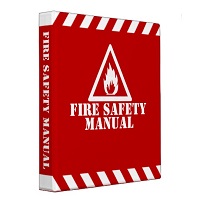 Thursday, April 18, 2024
Thursday, April 18, 2024  Thursday, April 18, 2024
Thursday, April 18, 2024 
Whether an existing or newly constructed building, each fire safety plan is a comprehensive set of documents which will be referenced on numerous occasions over the years. This “go to” manual for fire safety provides the site plan which outlines the fire routes, floor layout schematics and directional pathways to the exits. It is the building operator’s most valued set of working documents, as it includes the listing of persons requiring assistance, identifies the established safe-haven gathering areas for evacuees outside the building, and the locations of the emergency shutdowns for hydro and natural gas.
Regardless of whether the building has a newly-approved fire safety plan or one which is already in place, the owner and all representatives of the owner are responsible for ensuring that all applicable requirements of the Fire Code are followed at all times. These representatives include building personnel such as superintendents, building operators, and property managers. All building supervisory personnel are to be aware of their duties and provided with the applicable portions of the fire safety plan. In addition, all elected building supervisory staff and floor wardens must be trained and instructed on their duties. Property managers are to set up and conduct the fire drills as prescribed in the fire safety plan. Signage required for emergency evacuations is also listed, along with the drawings which indicate the locations of the fire and life safety equipment including the exit fixtures, extinguishers, and fire alarm-sprinkler devices.
Although the final version of the fire safety plan bears the stamp of approval by the City, the building management is still responsible for any errors and/or omissions arising after the fact. Every approval is based primarily on the information submitted and does not relieve building operators of their legal responsibility to carry out all the provisions of the Fire Code. It is therefore critical that the building management review their fire safety plan as often as necessary, but at intervals not greater than 12 months, to ensure that it takes account of changes in the use and other characteristics of the building as stated in the Fire Code. Re-submission to the City may be warranted in cases where the building ownership has been transferred, the structural layout of the building has changed, or when the fire systems have undergone upgrading. The updating of emergency contact details rarely calls for re-submission.